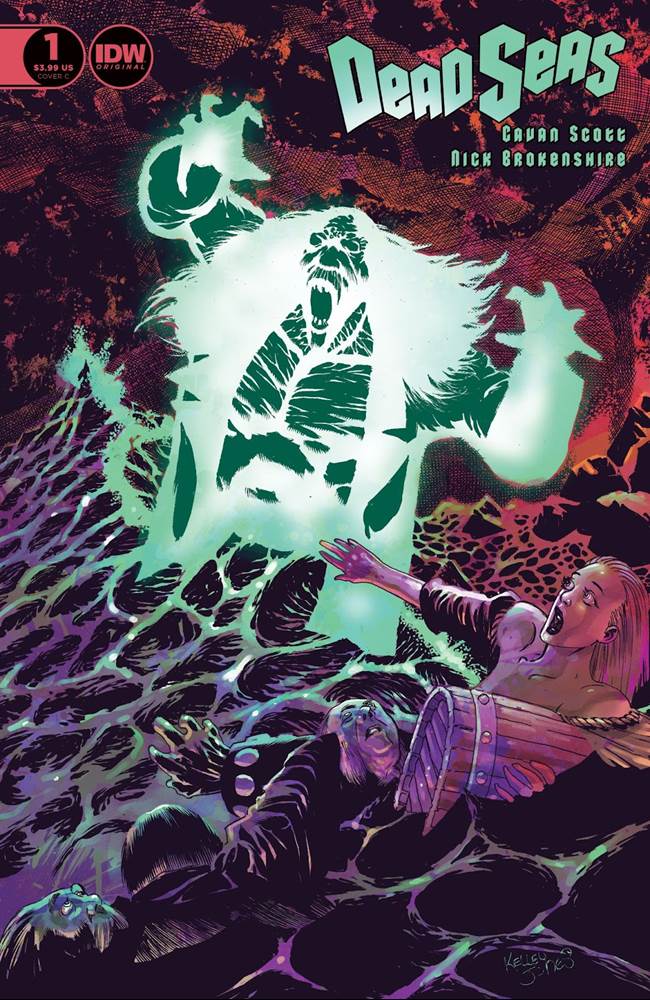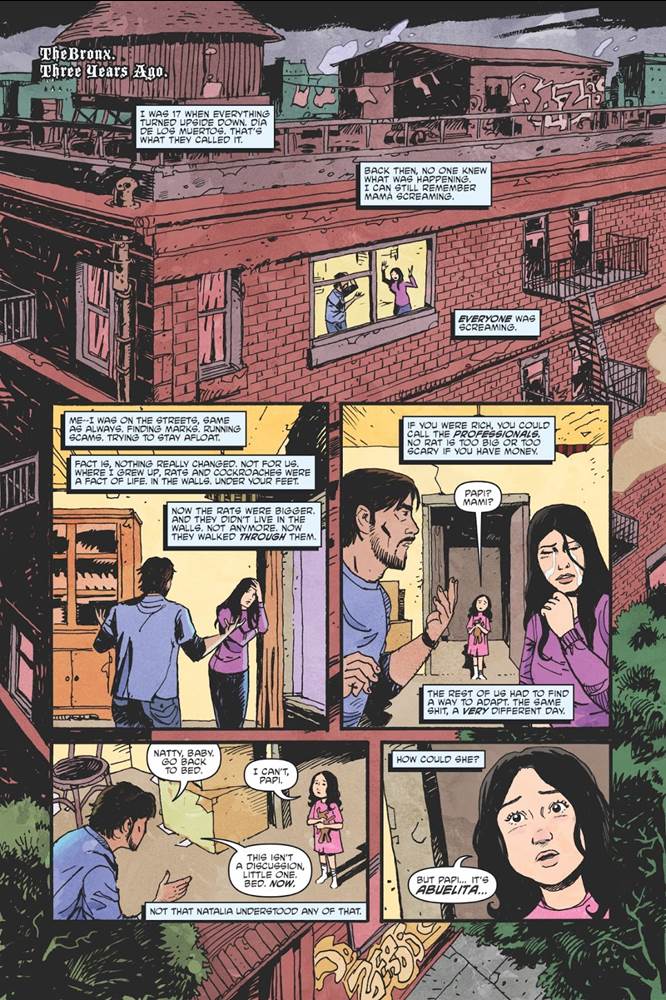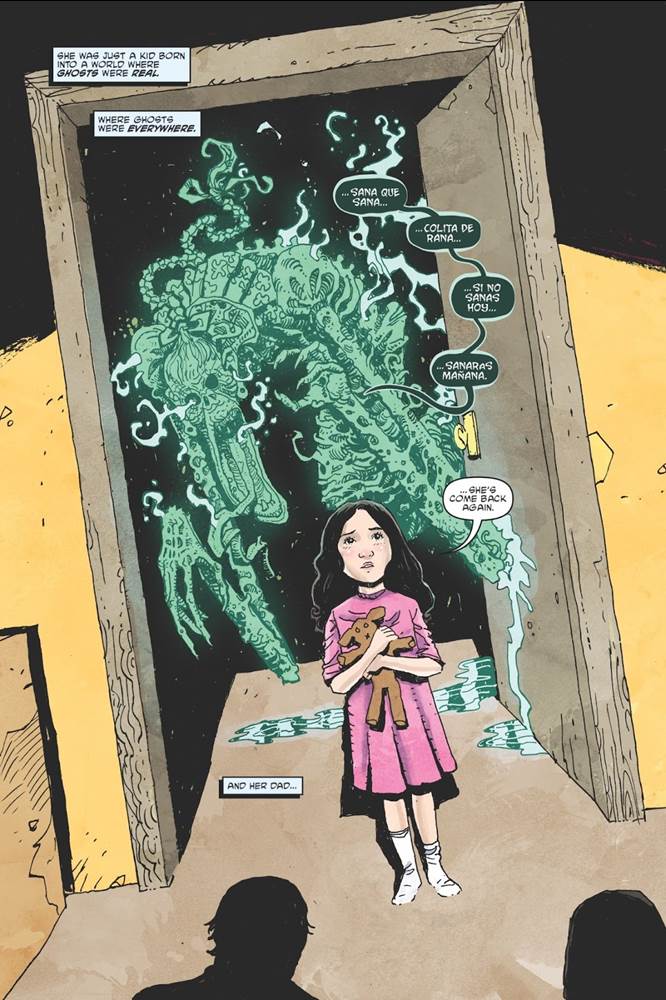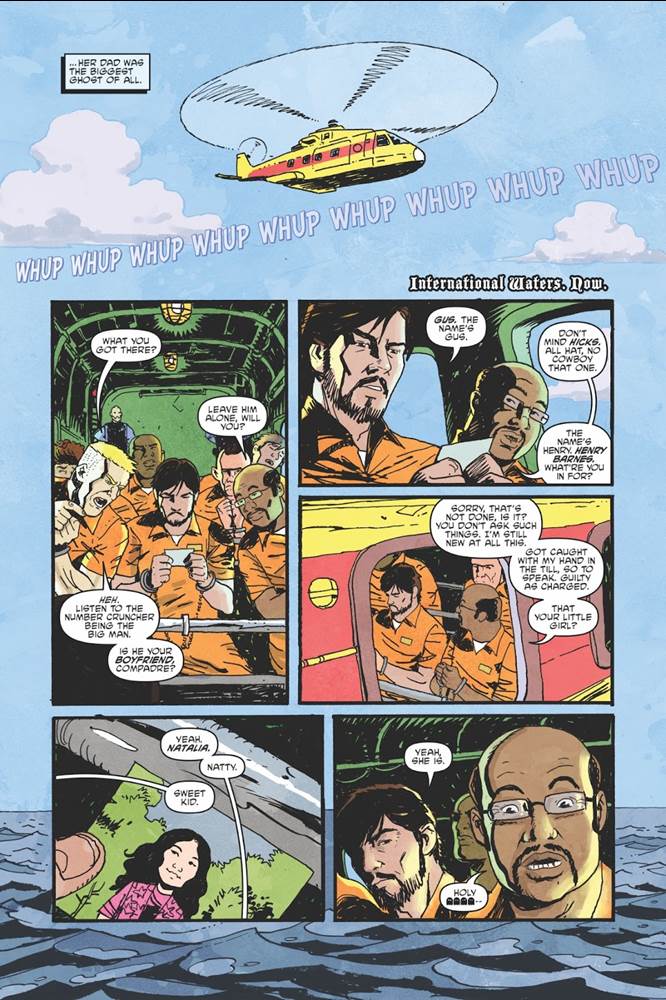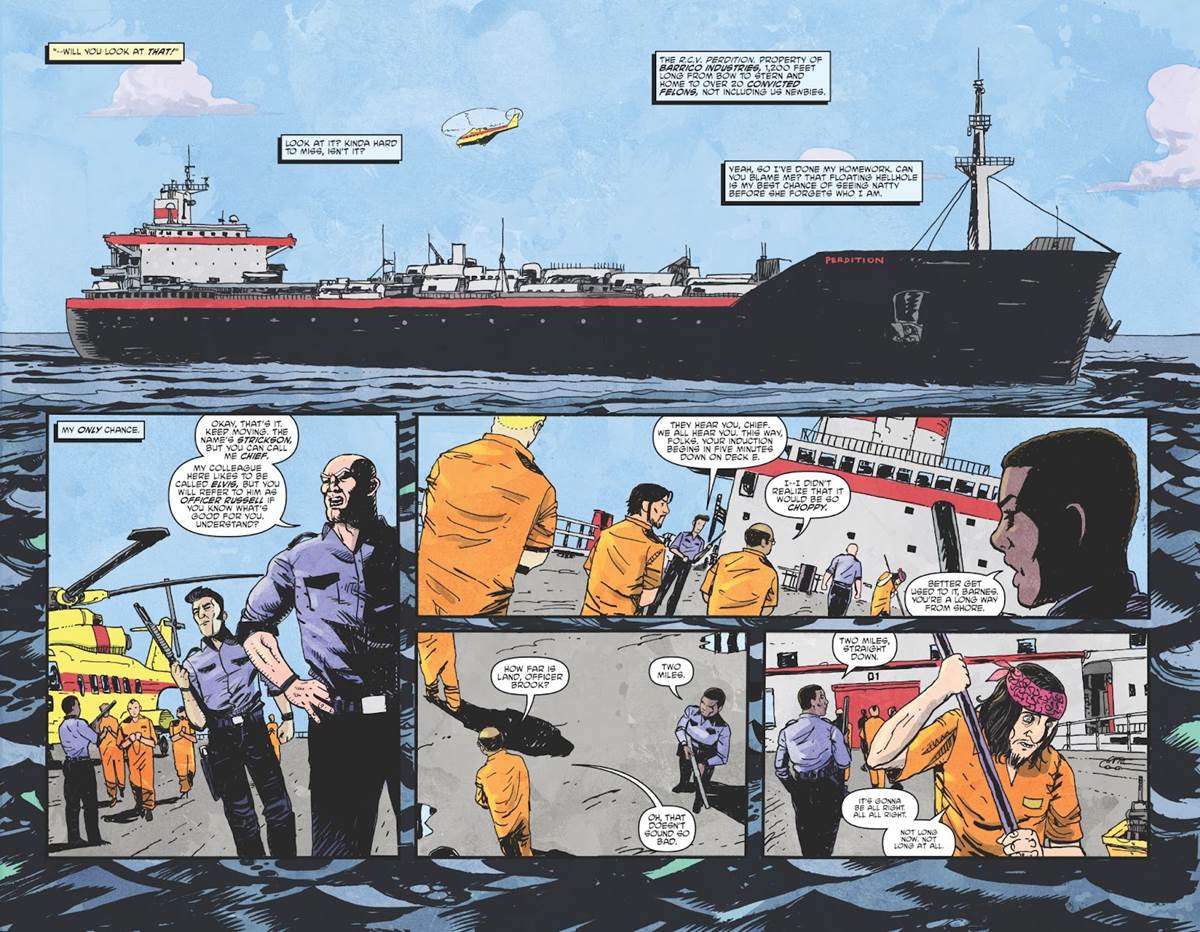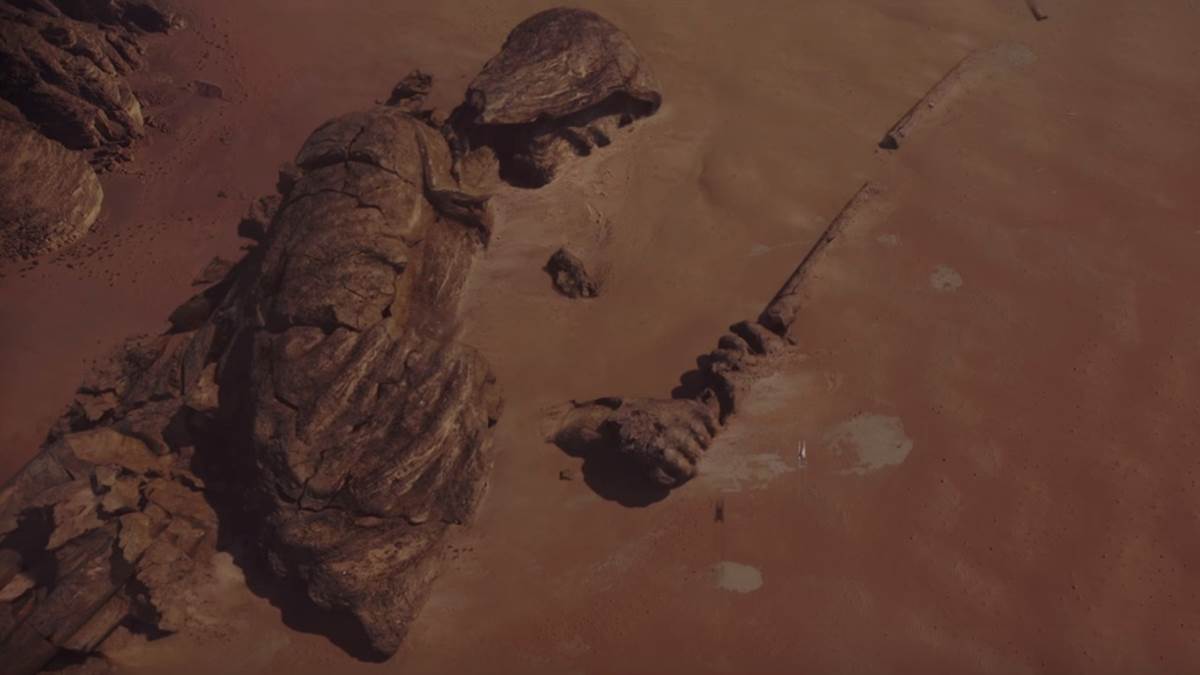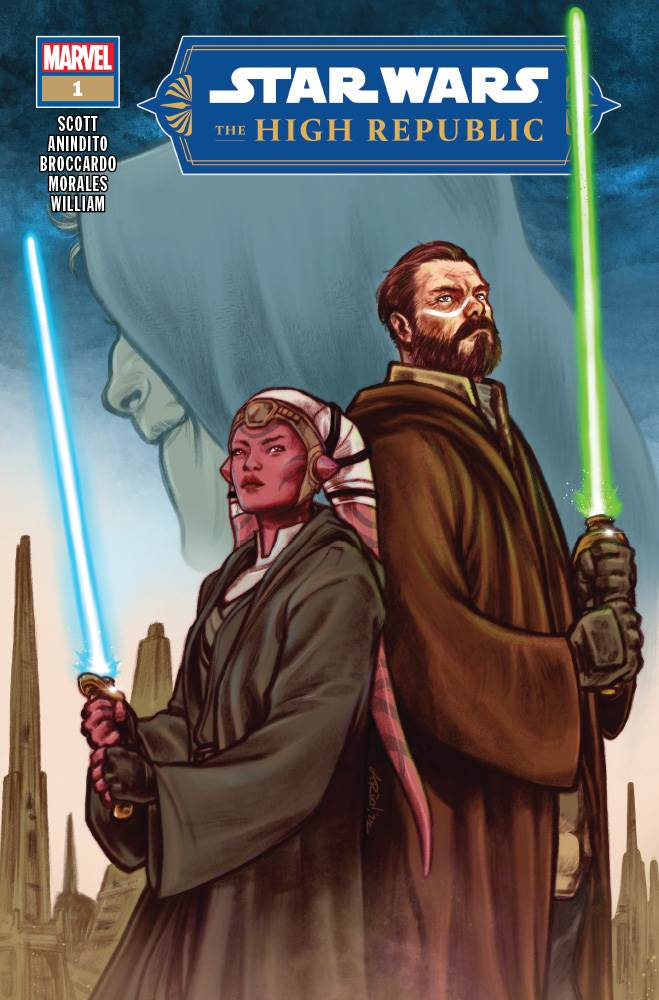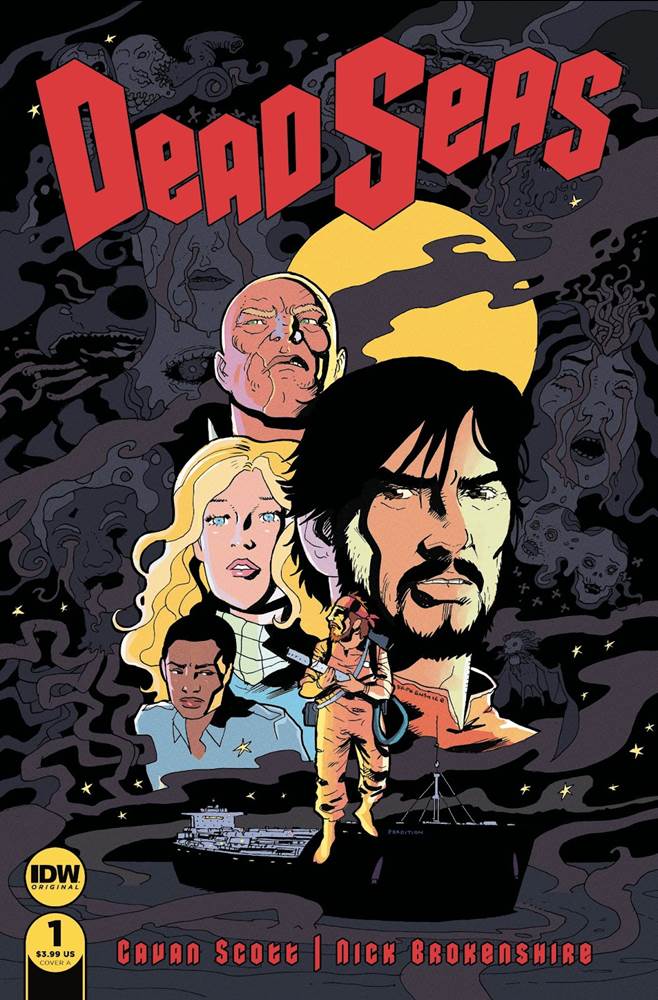For the past couple decades, British author Cavan Scott has been steadily building a following as a genre-fiction writer, working in popular franchises like Doctor Who, Transformers, and Sherlock Holmes. He’s also made a name for himself at Lucasfilm Publishing, where his contributions to Star Wars stories such as The High Republic multi-platform initiative and the audio drama Dooku – Jedi Lost have garnered acclaim from both critics and fans. Now Scott has partnered with artist Nick Brokenshire, his Star Wars: Tales from Vader’s Castle collaborator, to create an original comic-book miniseries entitled Dead Seas, which launches next month from IDW.
This week I had the pleasure of speaking with Cavan Scott once again about Dead Seas, his enduring love of 1970s disaster movies, and working with Nick Brokenshire as an artist. Near the end of the interview we also touched on an aspect of The High Republic’s Phase II that I find particularly interesting.
Mike Celestino, Laughing Place: How would you describe Dead Seas to someone who doesn’t know anything about it?
Cavan Scott: Basically it’s a disaster movie crashing together with a ghost story. I am a big fan of old films like The Poseidon Adventure and Titanic and The Towering Inferno, anything where a group of people face a terrible disaster– shows you a lot about me. [laughs] But I always thought that these things would be better with monsters… in fact, I think most stories would be. So it actually came from watching The Poseidon Adventure for a High Republic project. It was one of our keystone films right at the beginning, that we watched when we were discussing things. And I started to think, ‘Well, this is obviously exciting and I’ve watched it so many times, but how cool would it be if these people who are unfortunately passing away, would immediately come back as ghosts?’ So that’s where this story came from. It’s a story about a prison ship that is sinking, as will become clear as the story goes on. It was already haunted before, and the more it sinks, the more ghosts there are.
LP: Beyond the disaster films, I think I noticed bits of Ghostbusters and 90s action films like Con Air and Under Siege in there as well.
Scott: Yeah, I could see that.
LP: Can you tell me a little more about the development process for this comic, and how it ended up at IDW as a publisher?
Scott: It’s something I’ve been talking about for a while now, and I talked to Nick Brokenshire, who Star Wars fans would know for his work mainly on Star Wars Adventures and the Vader’s Castle series, and soon to be Tales from the Rancor Pit as well. Obviously we’ve worked together quite a lot, and I discussed this idea with him, because we were discussing whether we could come up with any of our own projects on the back of our Star Wars work, because we so enjoyed working together. And we came up with this idea, as I said, it’s set in the middle of a ship, it’s a bunch of prisoners who are sent in to deal with these ghosts and things go wrong. Yeah, there probably was a little bit of Ghostbusters in some of the original art that Nick came up with. I knew immediately the kind of ghosts he would draw, and yet still he surprised me. He surprises me every day with the art. But we started taking it around towards different people, we talked to a number of different publishers, and IDW– probably because of the link with Star Wars Adventures and working with them so much over the years– Chase, the editor there, loved it. And so the work began to try and make IDW the home of Dead Seas. That’s where we ended up.
LP: You mentioned the artist, Nick Brokenshire. What was your further working relationship like with him once this project got going? Was it a collaborative back-and-forth process?
Scott: That really was originally when we were conceiving it. We did a lot of work on this before we even got to scripting, before we’d even sold it– a bit of the pitching stage. And the way Nick treated it was like working as a concept designer on a film. If anyone knows anything about concept design, teams of artists will come up with concepts and they’ll draw a lot of material that isn’t actually in a script or isn’t suggested by anyone. It’s getting into the feel of the movie or the TV program. It’s creating a mood, and that’s absolutely what Nick did. He went away and he would come up with these pages and pages and pages of all these weird, wonderful ghosts, and then some of the characters. So as I was developing the story and working with him on that, some of the characters he was starting to draw in the concept art, I was going, ‘Well, that character sort of fits that prison guard’ or ‘That character sort of fits this kind of prisoner that I’m thinking of,’ and it was very much a joint process in those early days. Before we really even got into the pitching-it-around stage, we did some sample pages, we did a full outline, and it really was a joint project. So when it’s come to the writing stage, it’s actually pretty much laid out there in that original work we did. A lot of the time now I’m writing the scripts, sending them over to Nick, and saying, ‘Do you remember that bit we were talking about four years ago?’ And he can run with it, because we’ve got that basis now. We’ve got that foundation, and you just run from there.
LP: What about stylistically? What do you think Nick’s art brought to the specific tone and mood of Dead Seas?
Scott: I think people who know Nick’s art will be a little bit surprised at some elements of it, because he has changed his style slightly. If you actually look across his work, he does adapt his style for the kind of storytelling he’s involved with. I knew that’s what he would do with Dead Seas as well. There is a sort of graininess, so when you mentioned action movies [I was reminded of] when you’re on the ship, there’s a graininess that I would identify with things like Aliens, but on a ship in the ocean [instead of] in space. And then that’s counterpointed by the ghosts themselves, which are crazy. Behind every ghost, there’s a story. We don’t necessarily have the space to tell all the stories, but they have been worked out. Every ghost takes on the form of the way they died or what they were obsessed with in life. With the ghosts I pretty much just said to Nick, ‘Go for it.’ We both are influenced by European comics work. We’re both Brits, [so] we’re both influenced by things like Heavy Metal and 2000 AD, and I think that really shines through in Nick’s art on this project. But yeah, his art has changed from when we did the original pitch and we did the sample pages, which don’t actually appear in the comic. It’s perhaps a little bit more realistic than some of the work Star Wars fans will be used to from him. It does have this slight whimsy, as well– horrific whimsy, with the ghost designs.
LP: Tell me about some of the characters that readers will encounter along the way in this comic. Who are the heroes and villains to look out for? I feel as though some of those lines might be blurred.
Scott: [laughs] That’s what a disaster movie is all about, isn’t it? It’s one of the things I actually found interesting planning this out from the plotting stage through to making it a six-issue miniseries. I make no bones about the fact that this is a ship going down. This is that story, but at what issue does the ship start to sink? When you’re planning these kinds of stories for film, you spend a lot of time with the characters first. You have to get to know them so they can surprise you, and they can break your heart, and they can make you cheer, and all the things that you do in disaster movies. I suppose our main character is Gus. Gus is a prisoner– he’s a former conman who has obviously been in prison for a while. He’s been given this opportunity to get out a little sooner. [In] the world he lives in, ghosts are very real. People live with them every day. There’s a bit earlier on– which has been shown in the preview art– he’s desperate for his little girl to go to bed, but she can’t because her dead grandma keeps coming back to sing her nursery rhymes and lullabies. That’s the kind of world they’re living in. Gus’s story is wrapped around his daughter– he’s desperate to get back to her, to see her grow up, and as I said he’s been offered this chance to go and do this job on the ship, to scrape ectoplasm off the wall. In this world, ectoplasm is more valuable than oil.
He doesn’t really know what he’s getting into, but his idea is he goes in, he does the job, he keeps his head down, but unfortunately there are plenty of other prisoners who don’t want to keep their head down and want to take the best opportunities they can to get out. As in all good prison stories, there’s always a breakout. And you meet characters who are [Gus’s] friends, characters who soon become his enemies. There is Strickson who is this chief guard, who has a very interesting past that we come to learn about later on in the series. He’s a bit of a hard man; he takes no prisoners, literally. And then you’ve also got the administrator, who’s there as well– this is a privately owned prison, so it’s run as a business. It’s a wonderful setup for a thriller. From a creative point of view, that’s the joy of it, because you automatically have these characters who are all going against each other, who have different beliefs, who have different reasons to be there. In the middle of all this, as well, you have Isa who turns up, who’s the daughter of the person who owns the ship. She is there for other reasons that might not be completely in line with what her family asks. Everyone on that ship has a reason to want to get off, everyone has a secret they’re trying to hide, and there’s no secrets among the dead.
LP: I feel like this comic strikes a good balance between adventure and horror. As a writer, how do you maintain that balance without veering too far in either direction?
Scott: This absolutely leans more heavily into the adventure side of things. It’s a horror/adventure; I think that’s the best way to describe it. It has a certain trajectory and a certain pace because of the kind of story it is. We are heading towards a disaster, and then once the disaster happens, people are trying to save themselves. It’s interesting, because with horror you have moments where you have to really slow things down, but when you write an adventure story it’s all about speeding up. So it’s trying to find that balance. Quite earlier on, you have to say, ‘Well, I’m going this way or that way.’ But there are moments, as we go along, where it will get scary. We will have those quieter moments of dread, and also quieter moments of– hopefully– real empathy and sympathy.
LP: I also could easily see this story being adapted as a film or television series. Do you ever write comics with that intent or is that an afterthought?
Scott: I don’t think you should write [a story] just because you want it to become a TV show or a film. I think everyone’s got that in the back of their mind, and it would be dishonest to say otherwise, because there are so many films and TV shows that come out of comics now. It’s always there in the back of the mind, and I think it’s probably more in the mind for the companies that are publishing [these comics], as well. That’s part of the deal when you work with different publishing houses. But I’m primarily telling a comic [story] here. It’s a story that hopefully would be able to translate onto screen. I honestly think it would be able to, and I’m not sure if it’s something that I would want to translate [personally]. I’d love to see what someone else would do with it. But I’m definitely telling the comic version. That’s the starting point for this, but as always, it would be lovely [if] it did find a different audience. That’s what it is– this is very much aimed at comic fans. It’s a bit of a love letter to this kind of comic. It would be amazing and fantastic if at some point someone did adapt it for the screen so a new set of fans can find it. But I don’t think you can spend too much time thinking about [that], because then you start second-guessing, and you stop playing to the strengths of the medium you’re writing in. And that’s the most important thing.
LP: While I have you, I’d love to ask you one question about The High Republic: I'm fascinated by the Pilgrim Moon of Jedha and its history. What made you and the other members of the creative team decide to center the Phase II comic book around this location and how did you flesh out its population of Force religions?
Scott: I think we all fell in love with it the moment we saw it in Rogue One. Collectively, Rogue One is one of our favorite Star Wars movies. And for me especially, the history in that place [is appealing] as soon as you see it. We’re dealing with the golden age of the Jedi, and in Rogue One you see a statue of a Jedi that’s massive– huge– [fallen over] on its side. So I think we all wanted to tell the story of the place that had one of those. It does lean into some of the iconography we’ve been using for The High Republic so far. Personally, I’m a theologian; I’ve got a degree in theology. I majored in religious history, dealing with the first century and Jerusalem. Jerusalem has always fascinated me, so any kind of place like Jerusalem that has that history where different religions have a claim to that place [also fascinates me]. Different religions have to live next to each other because it’s sacred to many people– everything that brings, whether that’s the love or the understanding or the complete and utter chaos that we’ve seen in a place like Jerusalem– for me, that’s what Jedha represents. It’s Star Wars’ very own Jerusalem. As for populating it with Force religions, anyone who knows me knows how much I love the [Star Wars Expanded Universe, now called the “Legends” timeline]. [This] gave me a chance to delve back in and see some of the things that I’ve missed [in the current canon], expand on them, produce my take on them. It’s not exactly the same– some of the religions we see come back from the EU, they’re still the same, but it’s my take on them from a certain point of view. I’m fascinated by religion; I’m fascinated by people’s responses to religion, and let’s face it: our entire series is about one of the biggest religions in the galaxy, which is the Jedi religion, and how they cope with their faith and their belief system. So yeah, it’s a bit of a dream come true, working in that environment, and I’m loving every minute of it.
The first issue of Dead Seas will be released via IDW on Wednesday, December 21st. Star Wars: The High Republic is released monthly from Marvel Comics.

